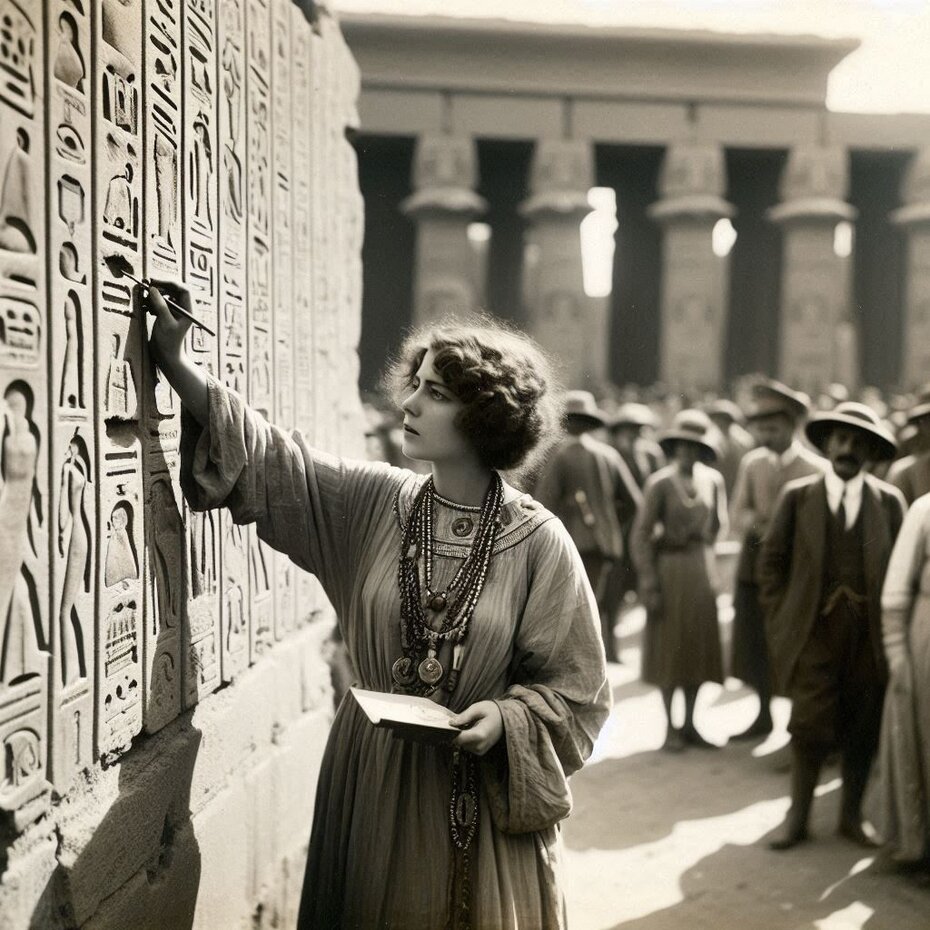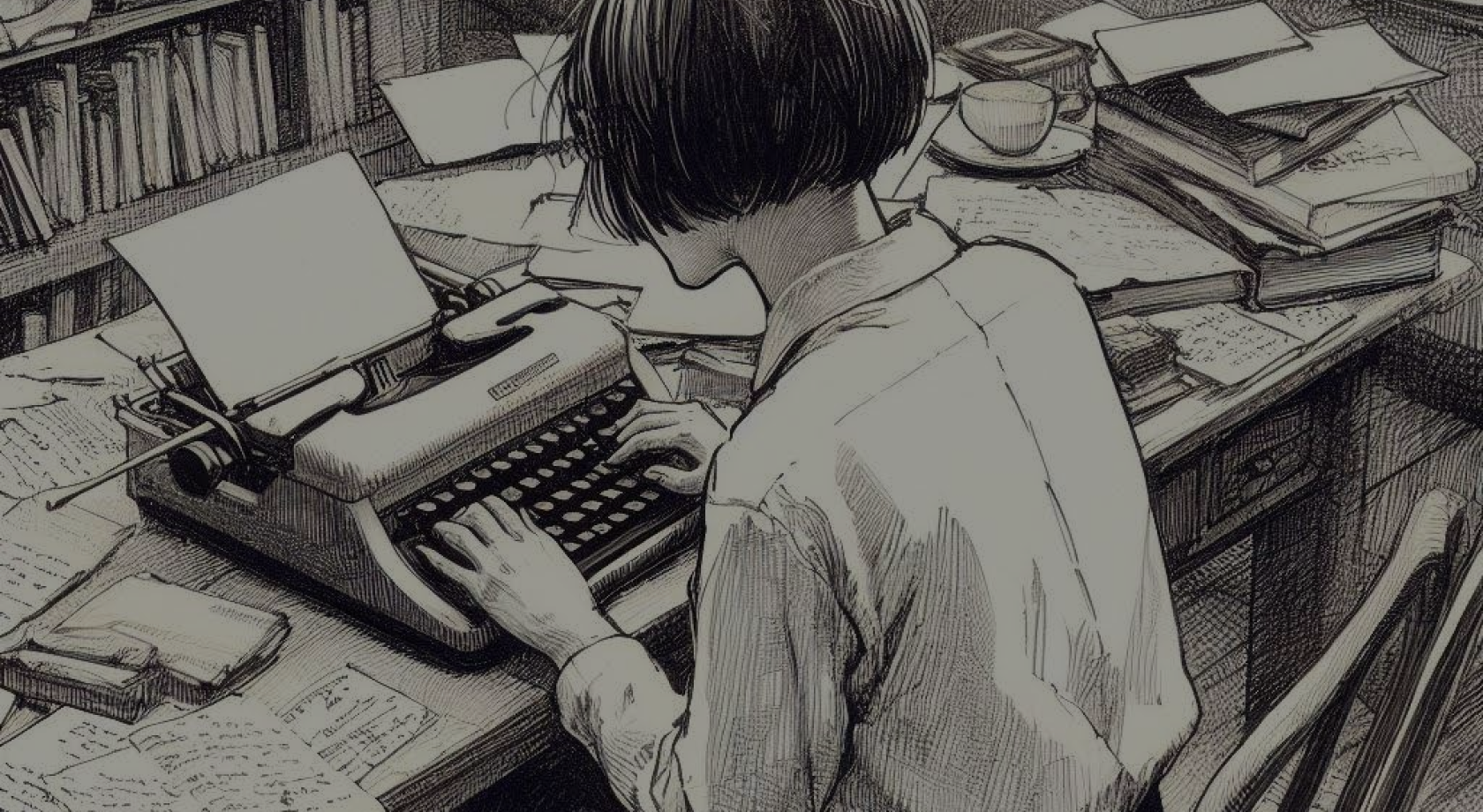The unusual life of Dorothy Eady: priestess or insane?

There are fantastic stories, dear reader, that reach our ears almost by magic. The story of Dorothy Eady is one such case. Over Sunday lunch, we were talking about haunting stories in the family when my aunt remembered a woman who claimed to have lived in ancient Egypt and deciphered various hieroglyphs for archaeologists working in the Nile Valley. When I asked ChatGPT who this woman was, he replied: “The woman you are referring to is probably Dorothy Eady, famous for her belief that she was the reincarnation of an ancient Egyptian priestess”. That was enough for me to devote a few hours to reading and listening to videos about this woman. But what I discovered after doing some research on the internet is truly otherworldly. Especially the end of this story.
Dorothy was born in London in 1904 to a lower middle-class family. Her father was a tailor who became known for his costumes for silent movies, which allowed him to buy a black Pontiac. As cars were rare in London at that time, the sleek Pontiac gave little Dottie's family a certain notoriety. Apart from that, there was nothing unusual about her family.
But that changed the day Dorothy, at the age of three, took a tumble on the stairs at home. It was so serious that the doctor declared her dead and that he would return shortly with the girl's death certificate and a nurse to prepare the body. However, when he returned an hour later, she was sitting on her bed, playing with her doll as if nothing had happened.
From then on, Dottie began having mood swings, hiding under the dining room table and screaming for them to take her back “home”. No Christ could convince her that home was where she had lived until then. In an attempt to distract the girl, her parents decided to take her to the British Museum. However, Dottie remained uninterested and kept her head down almost the entire time she walked through the museum's long corridors with her parents. But everything changed the moment she stepped into the Ancient Egypt section. Ecstatic, she began to exclaim that she was finally “among her people”, kissing the feet of the statues and staring longingly at the mummies in their sarcophagi.
From that day on, she dreamt repeatedly of the Temple of Seti I, in Abydos, 350 miles south of Cairo. But she didn't know where her dream was set until she was leafing through a magazine and came across an article about this temple in Egypt. The pictures of the temple were identical to the house of her dreams! “This is my home,” she said, showing the open magazine to her mother. ”But where are the gardens?”.
Because of these dreams and her obsession with Egypt, she was repeatedly expelled from the schools where she studied. She was accused of disturbing the other children with stories about her past life, of making comparisons in class between the Christian religion and Egyptian paganism, and of refusing to sing a religious hymn that begged God to curse the Egyptians. Little by little, she gave up going to school. She preferred to spend hours on end admiring the exhibition on Ancient Egypt at the British Museum.
Such enthusiasm in a little girl of just 10 caught the eye of the exhibition's curator. A 57-year-old archaeologist and philologist, he had collected most of the pieces on display at the Museum and would soon be knighted by the Queen for it. He decided to teach her to read hieroglyphics and was surprised to discover that what scholars took years to learn, she learned in just a few months. However, despite being a prodigy, she would never set foot in a school again.
At the age of 15, she began to tell her parents disturbing stories about nocturnal visits from Pharaoh Seti I. Visits so intimate that when she woke up, she still felt a weight on her chest. In addition, she suffered from severe bouts of sleepwalking and nightmares. All this led her parents to decide to have her repeatedly admitted to an institution for the mentally ill for observation.
At the age of 27, she moved to London and there met an Egyptian boy with whom she continued to correspond after he returned to his home country. Two years later, they decided to get married and she boarded a ship to meet her fiancé in Egypt. A small, unprotected woman abandoning her family and crossing the ocean alone to start a new life in a country with a culture absolutely different from her own... Dorothy was definitely not a conventional woman of her time!
Imam Abdel Meguid was a wealthy young man who provided her with a life of luxury to which she was not accustomed. Soon they would become parents to a little boy, who was christened Sety at her request. But Imam's family was not satisfied with his new daughter-in-law's eccentricities...
Soon after the birth of her son, she started having nightmares again and, when she woke up, she would write pages and pages of hieroglyphics that recorded everything that happened in her dreams. She said that night after night she was visited by an entity called Hor-Ra, who came to tell the story of her incarnation in Ancient Egypt. A story that took place around 1300 BC, during the reign of Pharaoh Seti I.
The 70 pages of hieroglyphics told the life of a girl who had been born into a modest family, the daughter of a warrior in the pharaoh's army and a vegetable seller. Her mother died when she was very young. Her father, feeling himself unable to raise his daughter alone, decided to give her to the temple, where she ended up becoming a virgin consecrated to the Goddess Isis. Bentreshyt, that was her name, was a beautiful young woman with whom the pharaoh fell in love when he saw her walking through the temple gardens. The couple's long walks through the gardens resulted in a pregnancy. However, when Bentreshyt's belly began to show, she was threatened by the temple priest: if she didn't tell him the name of the child's father, she would be executed. She decided to take her own life and thus protect her lover from the consequences of this forbidden relationship.
Dorothy's restless sleep and the repeated reports about her lover from Ancient Egypt drove her husband and his family to despair. Just two years after the wedding, they decided to separate. Imam then went to work as a teacher in Iraq and she decided to move with her son to a village near the pyramids of Giza. At the age of 31, Dorothy was about to employ every possible resource to achieve her life's goal: “to go to Abydos, live in Abydos and be buried in Abydos”.
This story continues in the next chapter.
Translated with DeepL.com (free version)
Voltar
